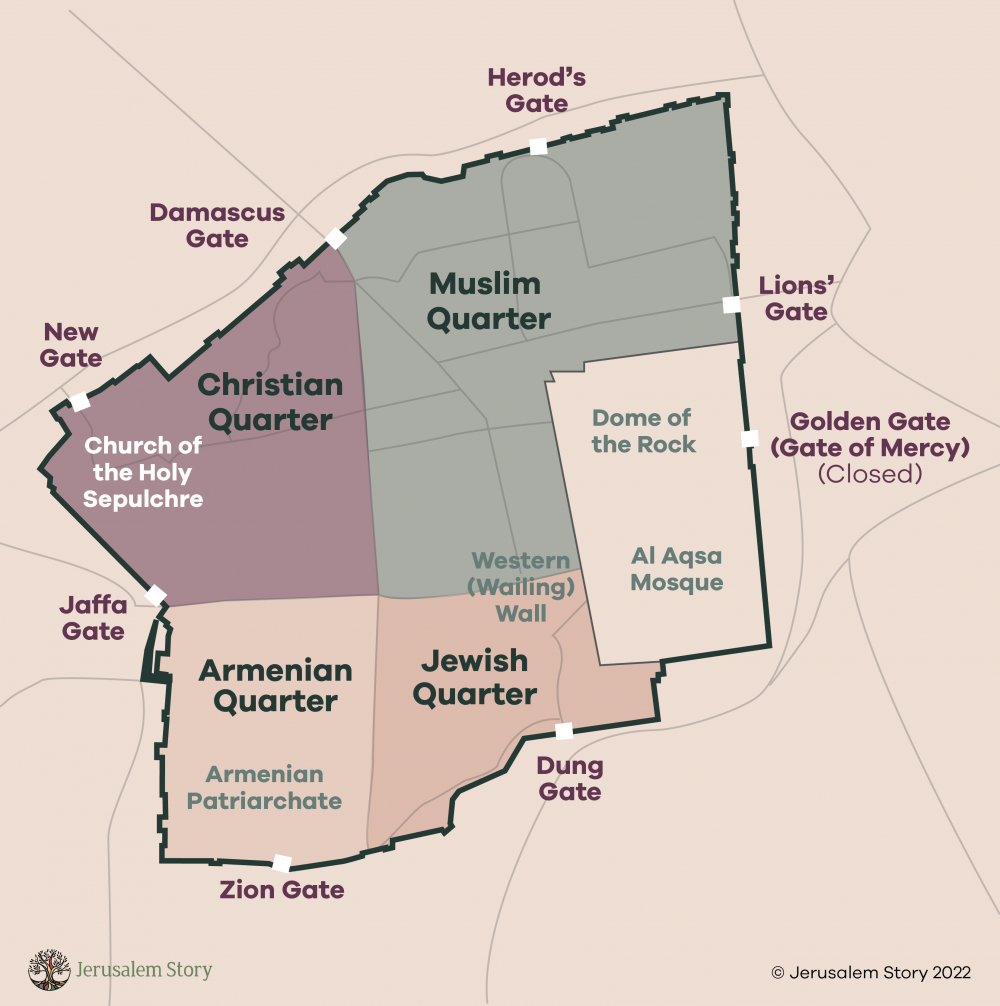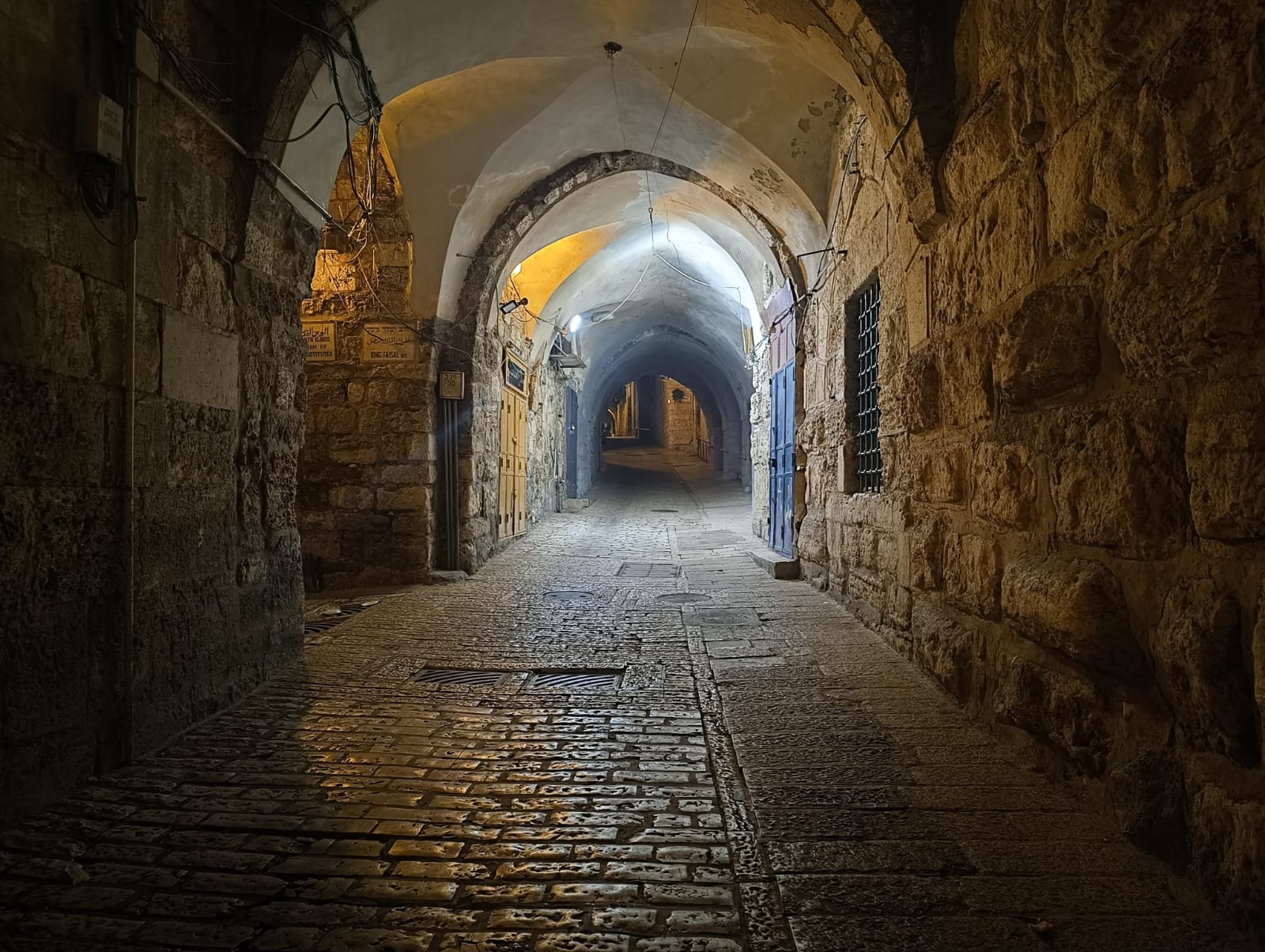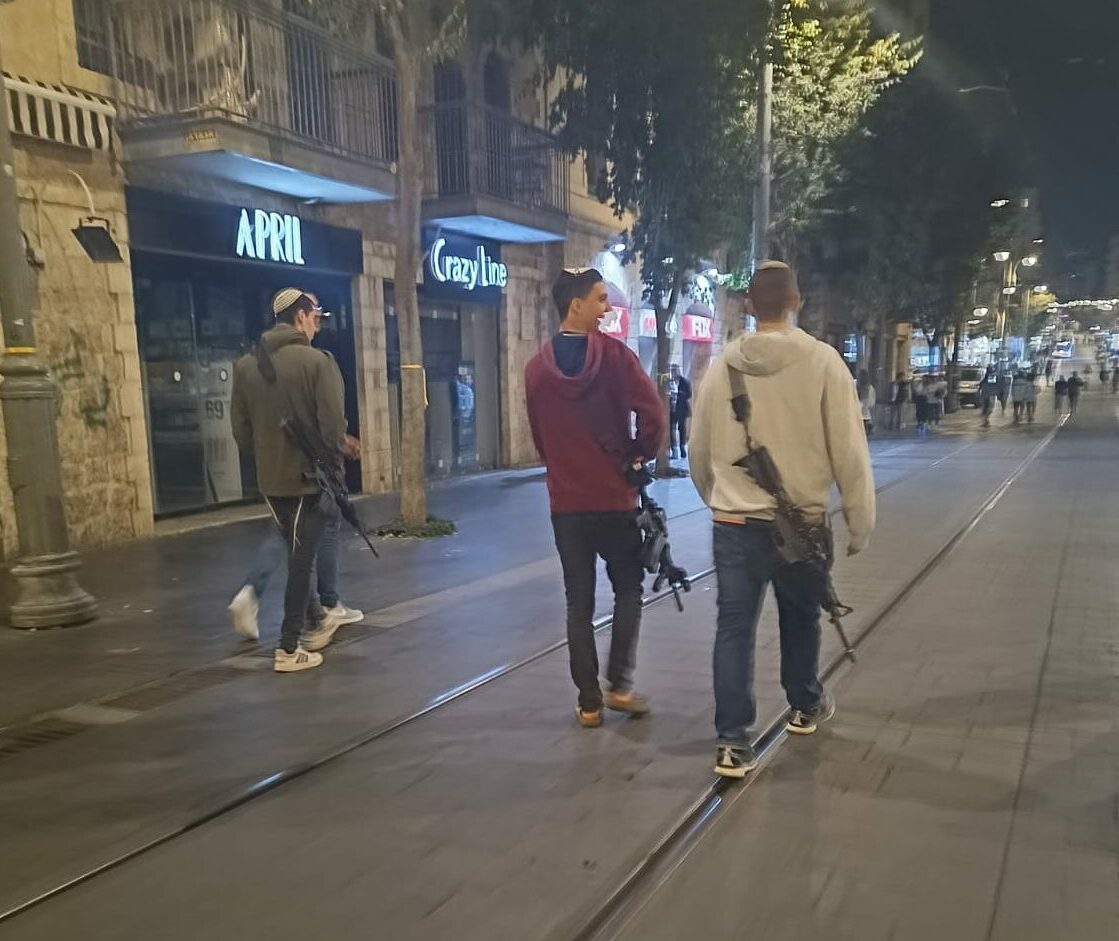Jerusalem was originally split in two in 1948, the year of The Nakba, when Palestinians were ethnically cleansed from much of their ancestral land and the State of Israel was created, stealing pieces of the city for the settlement of newly arriving Jewish people. That original land grab has since grown through an illegal annexation and ongoing occupation of east Jerusalem. The Old City, the location of numerous holy sites relevant to Muslims, Christians, and Jews, is surrounded by an Ottoman aged wall that is often put to its use in constraining entry into the Old City by the Israeli Army and police. Al-Aqsa stands tenuously on the inside of the wall, while many of its worshipers live on the other side. The sentiment is that extremist, right wing, Jewish Israelis, and their empire, want to demolish the mosque and build a temple in its place.

As we walked down the warmly lit Via Dolorosa on December 8th, we buzzed with anticipation and shared stories of miracles in our own lives, sprinkled with small Arabic lessons; katir, a lot, sa’a ki, yummy, ektalal, occupation. Tears streamed down my face as I touched the ancient stones and walked along the same path of the infamous martyr. I used the ends of my head scarf to wipe my cheeks and tuck myself underneath its warmth. My body was tense with anticipation of hundreds of right wing, jewish extremists charging towards Al-Aqsa, a literal, and symbol of, land they wish to digest.
By the end of the last prayer for the day, around 6:30pm, the streets were empty aside from a few families still briskly walking to get home. It was clear that tonight was not the night to be alone outside the mosque. We encountered a family of 3 carrying copious amounts of oranges in a baby stroller and by hand. One of us offered to help and we were quickly swept back to their house through alleyways and over barricades. The Matriarch of the family peeled oranges and her daughter poured coffee as she explained how she tries to go every Friday to pray, but is always turned away by the Israeli military. She shook her head and closed her eyes as she recounted the tear gas they sprayed while she attempted to pray. I asked if she continues to go, even though she has been denied and she proudly replied “yes, of course”. We parted with sentiments of strength, gratitude, and sumud (resilience).

As we left the forcibly silent Muslim quarter, we were bombarded by celebration, carelessness, and isolation just a few blocks over in a Jewish Neighborhood. People danced in the streets and young men laughed as they walked with assault rifles slung around their necks.

We all clenched our jaws, silenced our Arabic lessons, and I lowered my scarf to reveal my curls in a hopes to blend in until we swiftly arrived at our home base, astonished by the dissonance; just down the road, their neighbors, were confined to their homes for fear of destruction and extermination.
I was surprised by my shock. Living in the US supplies countless moments of dissonance among neighbors. From the Delmar Divide in St Louis to Skid Row to Chelsea’s 10th ave in NY, we watch as people are displaced, sanctioned, and murdered and their neighbors, with windows facing theirs, feast and dance on the graves of the community they pushed out. I had the same feeling of disappointment and anger walking through that Jewish neighborhood as I do when I walk to visit friends along the Delmar Divide and remember the names of the families that once lived on the south side of the street.
On Monday December 11th there is a call to action for everyone to stop, a total strike. For everyone, around the world to be faced with the stagnation of a mandated ceasefire and to feel the destruction of an entire people. To turn that rage into action.

